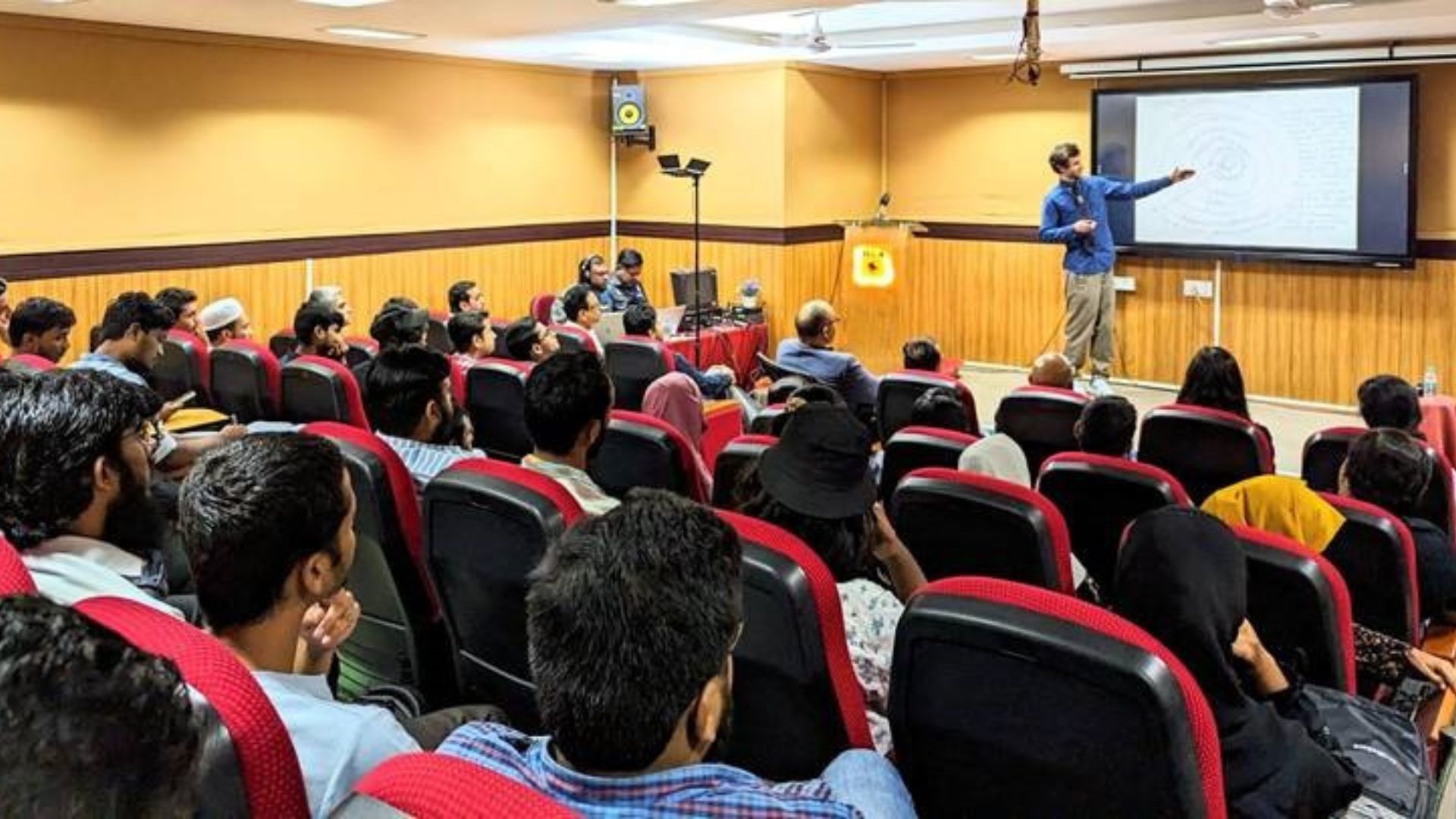American photographer and disability activist Nolan Ryan Trowe talks about his work and recent visit to Hyderabad.
January 2024

Photographer and artist Nolan Ryan Trowe hosts a masterclass on using documentary and photography for disability empowerment. (Photograph courtesy @USAndHyderabad/Twitter)
Nolan Ryan Trowe started experimenting with photography by taking pictures of his family and friends. In 2016, after he lost his ability to walk due to a spinal cord injury, Trowe decided to reframe the narrative around disability through his camera.
Trowe is an award-winning photographer and disability activist whose work has been published in multiple international media outlets. He has a bachelor’s degree in creative writing from California State University, Long Beach, and a master’s degree in experimental humanities and social engagement from New York University. Trowe visited Hyderabad in December 2023, where he showcased his work, delivered a keynote address, and taught masterclasses at the Indian Photo Festival 2023 and the Maulana Azad National Urdu University. Sponsored by the U.S. Department of State, his visit also included participation in an American Corner Regional Virtual Engagement, focusing on disability issues.
Excerpts from an interview with SPAN.
What inspired you to advocate for people with disabilities? Why did you choose photography as your creative medium?
I was inspired by my disability. My life, my friends and my community are all affected by disability rights. A lot of people I love have disabilities. It isn’t something that I feel some choice about. A camera became my tool because it is a way to show people what’s happening, how life is and what’s going on. Living in such a visual world and society [means] images have a greater impact on people. I think photography is one of the most accessible and democratic forms of expression.
How can we improve the narrative around disability and how will it help the community?
I think it can be improved by showing the real lives of people with disabilities. There tends to be this narrative of disability that is either inspirational or tragic. I hardly see people with disabilities being portrayed as just people. It often feels like their disability is the whole story or the main focus of the story. So focusing more on their humanity would be important.
Having more storytellers with disabilities sharing stories about the disabled community would be helpful, too. The “inside” perspective of disability by people with disabilities brings a different level of nuance to the stories being told and the way people are represented.
Can you tell us about your engagements and experience in Hyderabad?
The programs were mostly for students and audiences who had some connection to photography, media or film. I was there to teach a masterclass in photography and focused on the storytelling aspects of photography and the idea of making photo essays. The focus of this class centered on human rights. But I take a more conceptual approach to this topic than most other photographers would. I’m more focused on the reasons behind the photograph or the story itself. I hope students and audiences left the class thinking more critically about why they point their cameras at certain things and not others.
The tour experience was busy but fulfilling. There were some great discussions and meetings. I felt like even though I didn’t explore much of the city itself, I got to meet a lot of the people in the city.
Please tell us about your internationally acclaimed photography projects.
A lot of my photo essays were published early on in The New York Times. The one that got the most attention is my op-ed, “Revelations in a Wheelchair.” It was about photographing people in New York City who stared at me when I was using my wheelchair. It was about the inaccessibility of the subway system too. I wanted to give people a sense of how it feels to be a wheelchair user in a society that is not designed for wheelchairs. I hoped to show people what it feels like to be stared at for being a person with a disability.
Do you have any upcoming projects related to India?
I met with a few social workers who are really interested in organizing some participatory media workshops for the community in Hyderabad. This would mean putting cameras in people’s hands and teaching them how to tell their own stories, as a form of social justice and human rights. It would be radical to run these types of workshops and train people in Hyderabad to facilitate these workshops independently, allowing them to become instructors within their respective communities. The people I met with seemed very curious and passionate about this idea.
Click here to sign up for the free SPAN newsletter: https://bit.ly/SubscribeSPAN
COMMENTS